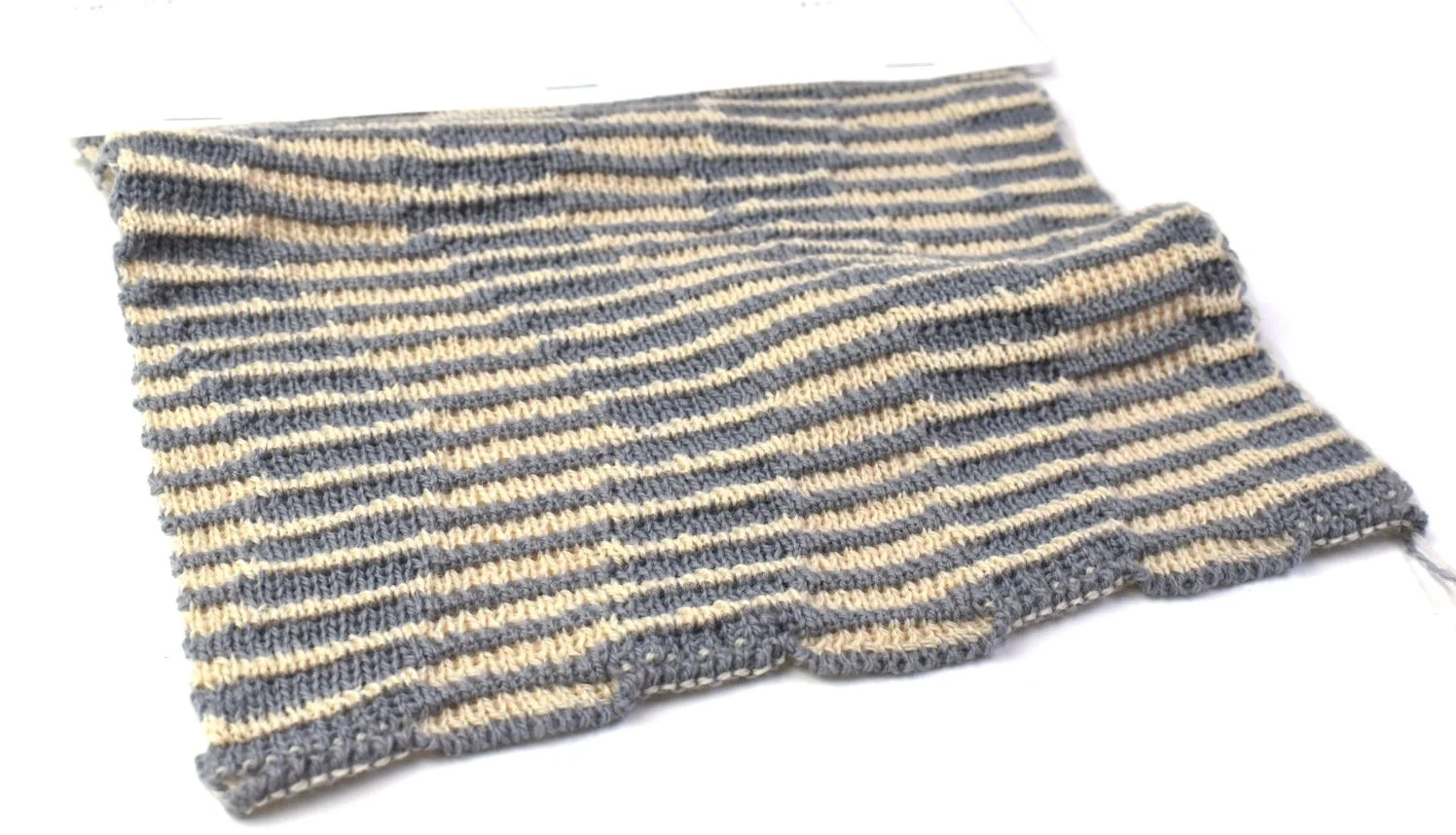Revisiting Double Jacquard
Although textures and intricate stitches are my true favorites, I spent a couple of weeks earlier this year revisiting double jacquard on the Kniterate knitting machine. Double jacquards were the first structure I explored on the Kniterate because, in some ways, jacquards are very approachable. In an earlier, more basic version of the Kniterate design app, programming a double jacquard was very straightforward, but that early version lacked a visualization of what each needle was knitting.
The new version of the design app is much more robust with a bunch of options. I didn’t explore them all. But I did try out the two ways of knitting 4-color double jacquards — using the birdseye jacquard command and using the load text file pattern command. I also used the load text file pattern command with the reversible option to knit a 2-color reversible pattern. I’ve knitted similar 2-color patterns using the birdseye jacquard command with the invert colors option.
Kniterate’s Birdseye Jacquard
The 4-color swatch below was knitted using the Kniterate birdseye jacquard command. With four colors (Kniterate can knit up to six colors per row.) the backing has a twill structure. That is, each yarn knits the selected pattern needles on the front bed and knits a diagonal pattern with the rear bed needles. With the birdseye command there are several options for edges and methods of knitting. For this swatch I used the “full” algorithm, closed edges, then left the remaining options unticked.
As with most anything you do on a knitting machine, the process was more involved than just making a couple of selections in the design app. In this case the image I worked from had to be prepared. That is, the size and number of colors in the image had to be modified first. I knitted several swatches, some pictured at the top of this page, including a few jacquards that originated in Designaknit 9 with a stripe backing. I played with various image resolutions and sizes, as well as working to optimize stitch size and takedown with yarns of different weights.
Designaknit 9, Jacquard, and Kniterate
If you're comfortable with Designaknit 9 (DAK9), images can be prepared for export to Kniterate using Graphics Studio and Stitch Designer. The file is loaded into Kniterate using the load text file pattern command and then adding the backing. At this time if you’re using 3 or more colors, a stripe backing is the only backing that can be created when working with a jacquard-as-text file from DAK9. (In the Kniterate design app choose BOTH_KNIT for stitch mapping with the Reversible option.) No matter what knitting machine you're using, a stripe backing can get a bit rippled if knitting with four or more colors. By reducing the stitch size on the rear bed, I was able to flatten the backing a bit.
The pattern side of the DAK9 + Kniterate swatch and a cropped version of the text pattern file from DAK9 are below.
Though I’m looking forward to more backings being introduced for double jacquard in the future, I’m excited right now by what’s possible once I begin exploiting the current stripe backing using the DAK9 + Kniterate combo. Before the Export to Kniterate option was available in DAK9, I painted the swatch below stitch by stitch in the design app just to try a rippled effect on the Kniterate. Rippled jacquards of all sorts will be immensely easier with this now available stripe jacquard capability.
Related Links
First Swatch — My blog post includes jacquard with an earlier version of the design app
Birdseye Jacquard Border Options — A Kniterate-provided reference with several option combinations
Designing with Kniterate, Session 2 — Basic Jacqards and Binding Off
O!
If you’re a Kniterate user, you may be interested in my prerecorded Designing with Kniterate classes. If you’re not an owner yet, I’d be happy to give you a virtual tour of the machine.





